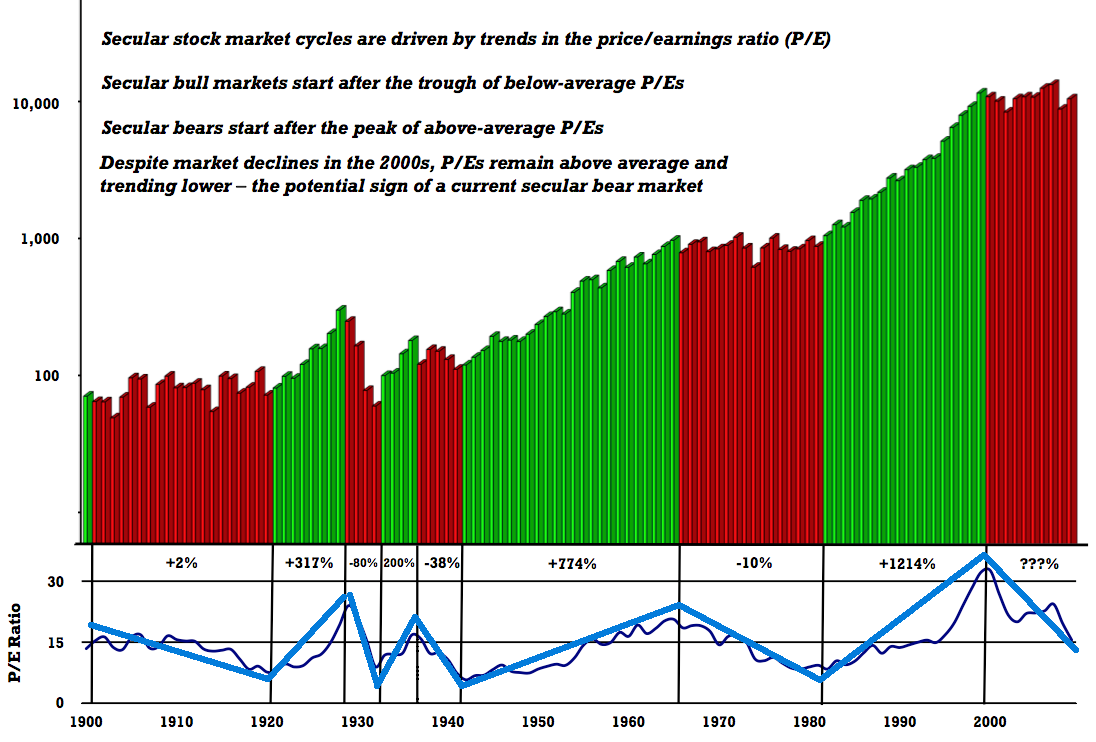And a point we've belabored for three years, use the 'Search blog' box, key word secular.
From The Big Picture:
Yesterday, Peter Boockvar referenced two WSJ articles on P/E: The Decline of the P/E Ratio and Is It Time to Scrap the Fusty Old P/E Ratio?
I believe these articles are asking the wrong question. Rather than wondering if the value of P/E ratio is fading, the better question is, “What does a falling P/E ratio mean?” The chart below will help answer that question.
We can define Bull and Bear markets over the past 100 years in terms of P/E expansion and contraction. I always show the chart below when I give speeches (from Crestmont Research, my annotations in blue) to emphasize the impact of crowd psychology on valautions.
Consider the message of this chart. It strongly suggests (at least to me) the following:
Bull markets are periods of P/E expansion. During Bulls, investors are willing to pay increasingly more for each dollar of earnings;Hence, a falling P/E ratio is not indicia of its lack of utility. Nor is it proof of “Fustyness.” Rather, it suggests that crowd is still feeling burned by the recent collapse in prices and increase in volatility.
Bear markets are periods of P/E contraction. Investors demand more earnings for each dollar of share price they are willing to pay.
Thus, this is not about the market’s economic concerns, or sustainability of earnings. It is about psyche....MORE
100 Years of Secular Markets, P/E Expansion & Contraction
click for ginormous chart
Source: Crestmont Research